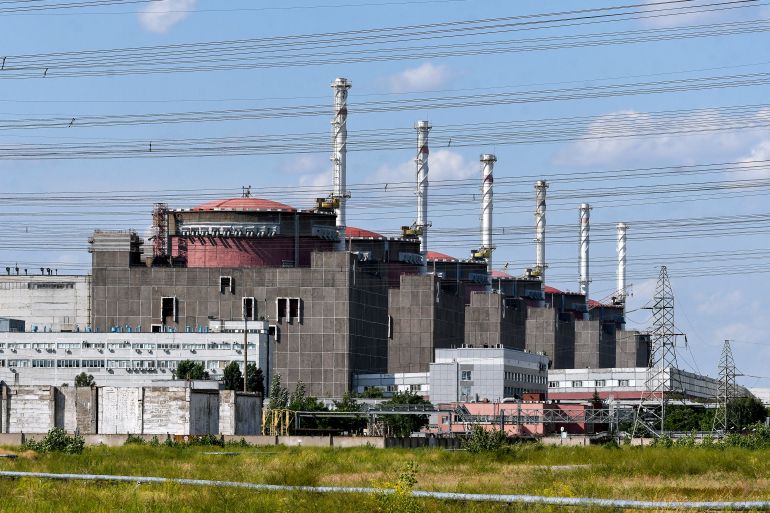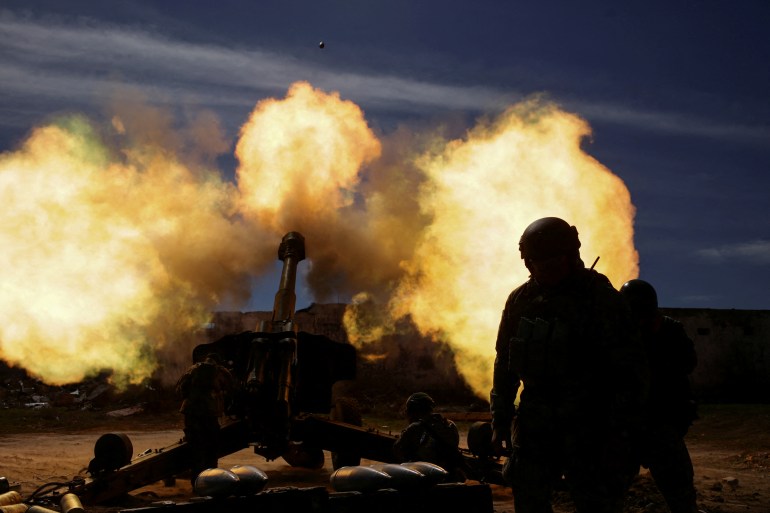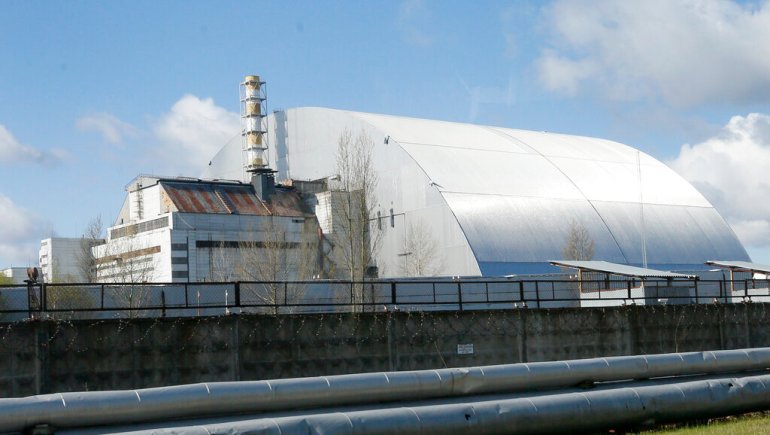Atomic agency: Danger signs at ‘occupied’ nuclear site in Ukraine
Rafael Grossi tells AP the Zaporizhzhia facility requires repairs and the current situation there is ‘not sustainable’.

The International Atomic Energy Agency’s (IAEA) director-general says the level of safety at Europe’s largest nuclear plant, which is currently under Russian military occupation in Ukraine, is like a “red light blinking” as his organisation tries in vain to gain access to the site.
Rafael Grossi said that the IAEA needs access to the Zaporizhzhia nuclear power plant in southern Ukraine so its inspectors can, among other things, reestablish the site’s connections with the Vienna-based headquarters of the UN agency.
Keep reading
list of 3 itemsRussia to deploy new intercontinental nuclear missiles by autumn
Is nuclear disarmament possible?
Ukraine’s 15 nuclear reactors gives it one of the largest nuclear power capacities in the world, and Russia’s invasion has essentially turned parts of country into a nuclear minefield.
Again and again since the invasion, nuclear experts have watched in alarm as Russian forces have come uncomfortably close to multiple nuclear plants in Ukraine.
Grossi said the Zaporizhzhia plant requires repairs.
“There are two units that are active, in active operation … others that are in repairs or in cool down. And there are some activities, technical activities and also inspection activities that need to be performed,” Grossi said.
“So the situation as I have described it, and I would repeat it today, is not sustainable as it is,” he said.
“So this is a pending issue. This is a red light blinking.”

The IAEA chief spoke in an interview on Wednesday with The Associated Press, a day after meeting with Ukrainian President Volodymyr Zelenskyy about the issue.
“Understandably, my Ukrainian counterparts do not want the IAEA inspectors to go to one of their own facilities under the authority of a third power,” Grossi said.
“I had a long conversation about this with President Zelenskyy last night, and it’s something that will still require consultations. We are not there yet.”
The IAEA chief said he is continuing to press Russia’s government for access to the Zaporizhzhia plant.
“I don’t see movement in that direction as we speak,” he said.
But he is meeting with the Russian side “soon”.
‘Unprecedented’
A security worker at the Chernobyl nuclear power plant told how Russian aircraft had flown over the damaged reactor site and Russian troops had dug trenches in highly radioactive dirt. On Monday, Russian cruise missiles flew over the Khmelnytskyi nuclear plant in western Ukraine.
“There cannot be any military action in or around a nuclear power plant,” Grossi said, adding that he has appealed to Russia about this.
“This is unprecedented to have a war unfolding amidst one of the world’s largest nuclear infrastructures, which, of course, makes for a number of fragile or weak points that could be, of course, exploited wittingly or unwittingly,” he added.
“So this requires a lot of activity on our side and cooperation. Cooperation from the Russian side. Understanding from the Ukrainian side so that we can avoid an accident.”

‘Can’t afford to stop’
On the Iranian nuclear issue, Grossi said his agency is still trying to clarify answers from Tehran on outstanding questions involving traces of human-made enriched uranium at three sites in the country.
Iran and the IAEA have been trying to resolve a series of issues between them since the collapse of Tehran’s nuclear deal with world powers, including regaining access to footage from surveillance cameras at atomic sites in the country.
He acknowledged that Iran’s ability to enrich uranium since the deal’s collapse had expanded as it uses more-advanced centrifuges. Tehran recently moved a centrifuge workshop to its underground Natanz nuclear facility after a suspected Israeli attack.
“They are transferring the centrifuge producing capacity to a place where they feel they are more protected,” Grossi said.
Iran long has insisted its nuclear program is peaceful.
Russia’s invasion of Ukraine, along with US and European support for Ukraine in the conflict, have increased tensions between Russia and the West, but it’s “imperative for us to look for common denominators in spite of these difficulties”, Grossi said.
“We cannot afford to stop. We have to continue. It’s in the world’s interest,” he said of global nuclear safety.